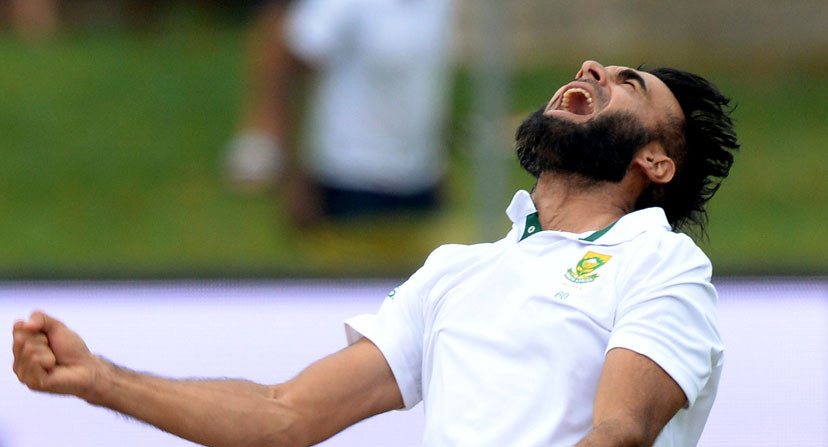Many will disagree but I reckon Imran Tahir should be the first name written on the Proteas team sheet for the tour to Bangladesh.
That will be when South Africa next plays international cricket, in the first week of July. There are two T20Is, three ODIs and two Tests. Days after they return home, there are some scores to settle against New Zealand, with two T20Is and three ODIs. Tahir must play across all formats, home and away.
The new convener of selectors is set to be named on 2 June following a Cricket SA board meeting that will endorse a replacement for the outgoing Andrew Hudson, while a head bowling coach to replace Allan Donald will also be rubber-stamped. Throw in the thorny issue of enforced quotas in the team selection and we can feel much change in the air.
However, Tahir, the 36-year-old with the youthful exuberance of a toddler who has been let loose in a toy shop, should be one constant in the Proteas set-up.
Discarded for Dane Piedt after 16 Tests, in which he claimed 43 wickets at an unflattering average of 46.39 runs per wicket, Tahir was then overlooked for Simon Harmer after the latter replaced Piedt, who was injured following an eye-catching man-of-the-match 8-156 debut against Zimbabwe.
Piedt’s selection, and then that of Harmer, suggested the Test door had been shut firmly in the face of the Pakistan-born South African wrist spinner.
However, with his performances at the World Cup – he took 15 wickets, joint-most of any spinner – and the Indian Premier League, where he is the joint-leading wicket-taker with 13 for the Delhi Daredevils, has thrown new debate around him.
Before the last T20 World Cup, Proteas captain Faf du Plessis said: ‘Imi is very important to me. He’s as big a strike bowler as Dale Steyn is to our team. He’s a game changer and I also understand what comes with that. Imran is never a guy that needs to bowl and keep the run rate down for you. He’s a wicket-taker and you need to get the best out of him; bowl him in situations where we are looking to get wickets.’
The four-over maximum of T20s suits Tahir down to, well, a ‘T’. And a 10-over limit in the ODI format also allows him to bowl two spells of five overs, to get the best out of him. In T20 Internationals his average is 14.68 and in ODIs it’s 20.51. Compare that to his Test average and it looks as though we’re dealing with two different bowlers.
And therein lies the problem – and solution.
Tahir is the best spinner in the world at the moment – or, at least, the best spinner who hasn’t had to have his action remodelled at the insistence of the ICC. Du Plessis is spot-on in his assessment: Tahir is a strike bowler, like Steyn is.
Therefore, when he is picked for the Proteas at Test level, allow him to operate like a strike bowler. Bring him on when South Africa needs wickets. Set attacking fields, not defensive ones. Treat him like a Steyn, Morne Morkel or Vernon Philander. Attack with him, don’t expect him to become defensive, closing up one end while rotating the quick bowlers at the other.
It is said that Tahir is not a success at Test level because he bowls too many ‘boundary balls’ and that batsmen simply defend to him and wait for the bad ball, which invariably arrives. Those same people reckon he’s more successful at T20 and ODI level because the batsmen need to attack to score the runs; in the Test arena there is plenty time to accumulate.
I’d like to see Hashim Amla, as Test captain, use Tahir aggressively. Bring him on for four or five overs at a time and let him strike. Don’t play him in a role that was better suited to a Paul Harris. Short bursts with Tahir won’t allow the batsmen to settle – and even if they go into defensive mode against him they’ll have the quicks running in hard from the other end.
The next Proteas assignments are in Bangladesh and there will probably be two spinners – plus JP Duminy – in the starting XI on those tracks. I’d really like to see Tahir as one of those two, along with Piedt.







